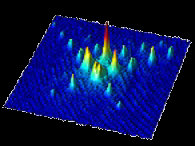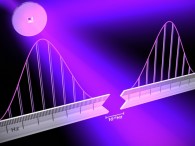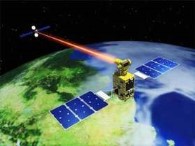Cold Atom Physics and Precision Measurement (CAP) Research Group
In recent years, the developments of laser physics, atom optics, and quantum control technologies have enabled the cooling of atoms to the nanokelvin (nK) scale, creating highly controllable ultracold atomic gases. This system provides an ideal platform for studying quantum many-body physics, conducting quantum simulations, and achieving high-precision quantum measurements, as well as realizing practical quantum computers. It has become one of the most cutting-edge and pivotal directions in quantum physics. Furthermore, research on cold atomic systems offers foundational insights for multiple areas, including quantum information, quantum chemistry, and condensed matter physics.
Our “Cold Atom Physics and Precision Measurement (CAP)” Research Group at Peking University focuses on three key directions utilizing cold and ultracold atomic systems:
1. Fundamental Research: (1) Bose-Einstein Condensates/Fermi Degenerate Systems; (2) Low-Dimensional Systems and Critical Physics in Optical Lattices; (3) Novel Quantum Phases in High-Orbital Optical Lattices.
2. Precision Measurement: (1) Space-Based Ultracold Atomic Physics Platform; (2) Miniaturized Optically Pumped Cesium Atomic Clock; (3) Compact Atomic Gravimeter; (4) Atomic Gyroscope.
3. Quantum Computing: (1) Rydberg Array Quantum Computing Platform; (2) Optical Lattice Orbital Quantum Computing Platform.
Key Achievements of the CAP Group:
(1) Our team has developed a series of high-band preparation techniques for ultracold atoms in optical lattices, leading to important discoveries in high-band physics. These include the observation of the sliding superfluid and Potts-Nematic superfluid - two distinct quantum phases characteristic of high-orbital systems. Moreover, we have systematically investigated fundamental phenomena such as scattering dynamics, transport properties, and emergent quantum behaviors in low-dimensional gases.
(2) In 2023, our team successfully established Peking University's first fermionic quantum simulation experimental platform based on ⁶Li. Featuring customized optical lattice design and precise magnetic field control techniques, this platform provides a novel experimental approach for studying strongly correlated fermionic systems.
(3) The Cold Atom Science Laboratory team at Peking University, in close collaboration with the engineering team from the Shanghai Institute of Optics and Fine Mechanics, overcame significant technical challenges to construct the ultracold atomic cabinet. The extreme conditions enable the resolution of debated quantum effects, precision tests of fundamental physics principles, searches for exotic dark matter particles, and more.
(4) Our team has developed a quantum Monte Carlo algorithm specifically adapted for optical lattice systems. This algorithm can accurately characterize quantum fluctuations and critical behaviors in low-dimensional systems at finite temperatures, thereby providing a verifiable theoretical framework for observing critical phenomena in cold atom experiments.
(5) Our team has conducted long-term research on optically pumped cesium atomic clocks. After nearly two decades of dedicated exploration, we have achieved frequency stability of 6.8×10^(-13)@1s (short-term) and 4.8×10^(-15)@100,000s (long-term). These specifications surpass those of the GPS cesium clock (5071A high-performance tube) by a factor of five, reaching the leading international level in timekeeping cesium clocks and representing a breakthrough in ultra-high-precision atomic clock technology.
(6) We demonstrate high-precision gravity acceleration measurements using a Ramsey-Bordé cold atom interferometer with a moving optical lattice. Compared to conventional Mach-Zehnder-type atomic gravimeters, our system reduces the vertical displacement of atoms by two orders of magnitude while maintaining comparable system-limited resolution, showing strong potential for simultaneously achieving both high precision and miniaturization.
(7) We have successfully developed China's first ultracold-atom-based guided-wave interferometric gyroscope. This innovative apparatus employs several key techniques including in-situ BEC transfer, magnetically guided orbital transport, and Bragg pulse interferometry to achieve precise manipulation and interferometric measurement of atomic wave packets. The system currently demonstrates angular velocity measurement sensitivity at the level of 1×10⁻⁵ rad/s, establishing crucial technological foundations for next-generation high-precision inertial navigation systems.









